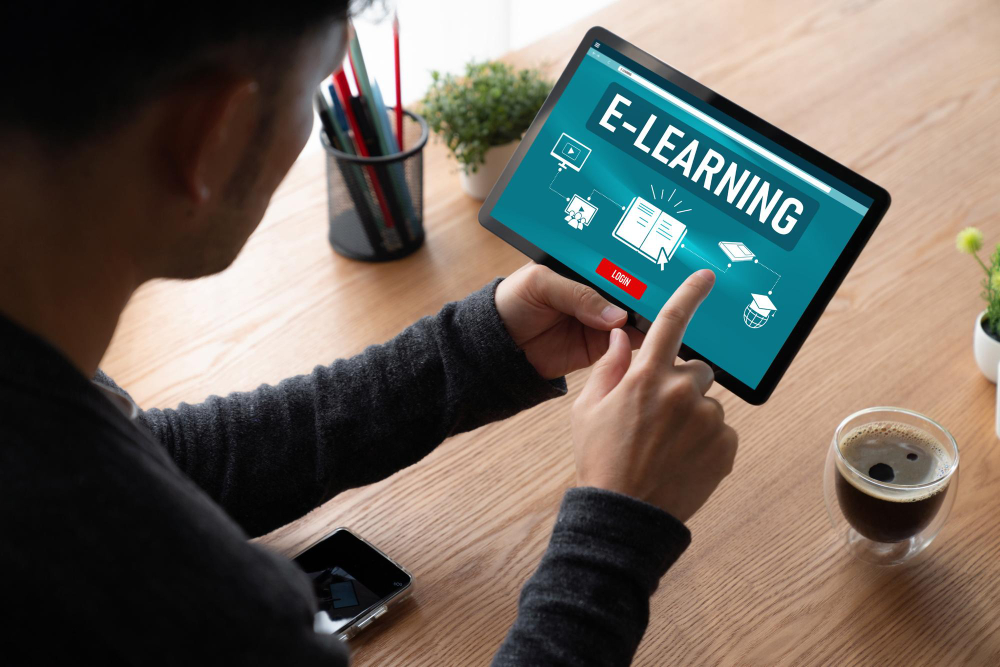
Thursday, 20Nov 2025
Adaptive Learning Technology Transforms Educational Personalisation: Creating Tailored Pathways for Every Student
Beyond One-Size-Fits-All Education Adaptive learning technology transforms…

Thursday, 9Oct 2025
Interactive curriculum design revolutionizes how students connect with educational content, transforming passive observers into active participants in their learning journey. The evidence speaks volumes—students engaged through interactive learning demonstrate 18% higher achievement rates and retain information 65% more effectively than those experiencing traditional instruction methods. These statistics highlight a fundamental truth: engagement isn’t just a nice-to-have feature; it’s essential for effective learning.
Despite technological advances, many educational programs still rely on outdated approaches that fail to capture student interest:
The consequences are clear: diminished attention, reduced comprehension, and ultimately, learning outcomes that fall short of their potential.
The human brain processes information through multiple channels simultaneously. Effective interactive curriculum design leverages this capability by:
A science curriculum that allows students to see molecular structures, hear explanations, and manipulate virtual models creates deeper understanding than any single approach could achieve alone.
Not all interactivity delivers equal educational value. Strategic interactive curriculum design incorporates:
For example, a history module might allow students to make economic decisions as a historical figure, then trace the consequences of those choices through simulated outcomes—creating deeper understanding of cause-and-effect relationships than passive reading ever could.
Each student brings unique strengths, challenges, and background knowledge to the learning experience. Interactive curriculum design acknowledges this reality through:
This personalization ensures that each student receives the right level of challenge—maintaining engagement by avoiding both frustration and boredom.
Effective learning requires continuous feedback. Interactive curriculum design weaves assessment throughout the learning experience by:
These embedded assessments transform evaluation from a stressful endpoint into a natural part of the learning process.
Interactive curriculum design transforms mathematics from abstract symbols to concrete understanding through:
A middle school algebra curriculum might allow students to virtual balance scales to solve equations, creating intuitive understanding of algebraic principles before introducing formal notation.
Interactive elements transform language arts from passive consumption to active creation through:
An interactive novel study might allow students to explore character motivations through dialogue choices, creating deeper engagement with themes and literary elements.
Interactive curriculum design shifts science education from memorization to exploration through:
A biology curriculum might allow students to manipulate environmental factors in a virtual ecosystem, observing the cascading effects of their changes over simulated time.
Interactive elements transform social studies from memorizing dates to understanding decisions through:
A unit on government might allow students to simulate the legislative process, experiencing firsthand the complexities of building consensus and making policy decisions.
Effective interactive curriculum design begins with precise learning objectives that:
These objectives ensure that interactivity serves learning goals rather than becoming mere entertainment.
Interactive elements should build in complexity as students develop skills:
This progression maintains engagement while developing student independence.
Feedback is the engine of improvement in interactive learning:
These feedback approaches transform mistakes from discouraging events into valuable learning opportunities.
Interactive curriculum must be accessible to all learners:
These considerations ensure that interactive design enhances rather than limits educational equity.
Effective interactive curriculum design generates measurable engagement:
These indicators demonstrate that students are not just completing requirements but actively investing in their learning.
Ultimately, interactive curriculum design must improve learning outcomes:
Research consistently shows that well-designed interactive learning experiences outperform traditional approaches across these metrics.
Perhaps most importantly, interactive curriculum design builds student agency:
These outcomes extend far beyond content knowledge, preparing students for lifelong learning in a rapidly changing world.
Many schools face technology constraints that affect implementation:
These approaches ensure that technical limitations don’t become barriers to learning.
Educators need support to effectively implement interactive curriculum:
This support transforms teachers from hesitant adopters to confident facilitators.
Effective interactive design finds the sweet spot between guidance and discovery:
This balance ensures that freedom doesn’t become frustration and structure doesn’t stifle creativity.
Interactive curriculum design represents not just a technological advancement but a fundamental rethinking of the learning experience. By placing students at the center of active, engaging experiences, this approach creates deeper understanding, greater retention, and more transferable knowledge than traditional methods can achieve.
The most effective educational programs recognize that engagement is not peripheral to learning—it is essential. By implementing thoughtfully designed interactive curriculum, educators can transform student experiences from passive consumption to active creation, building both knowledge and the skills needed for lifelong learning.
Learning Owl specializes in creating custom interactive curriculum designs that engage students and improve learning outcomes. Our team of instructional designers, subject matter experts, and educational technologists can help you transform your curriculum into dynamic digital experiences that inspire and educate.
Contact Learning Owl today to discover how our interactive curriculum design services can revolutionize your approach to K-12 education.

Thursday, 20Nov 2025
Beyond One-Size-Fits-All Education Adaptive learning technology transforms how educational content responds to individual learner needs, creating unprecedented opportunities for personalized mastery across diverse student populations. Traditional educational approaches—standardized content delivery,…
Read More line_end_arrow_notch
Monday, 17Nov 2025
Reimagining Scientific Discovery STEM eLearning innovations transform how students engage with scientific and mathematical concepts, creating unprecedented opportunities for deeper understanding and authentic inquiry. Traditional science and mathematics education—textbook explanations,…
Read More line_end_arrow_notch
Thursday, 13Nov 2025
Beyond Checkbox Compliance Compliance training strategies transform how insurance organizations approach regulatory requirements, converting what many view as burdensome obligations into operational advantages. The insurance industry faces one of the…
Read More line_end_arrow_notch